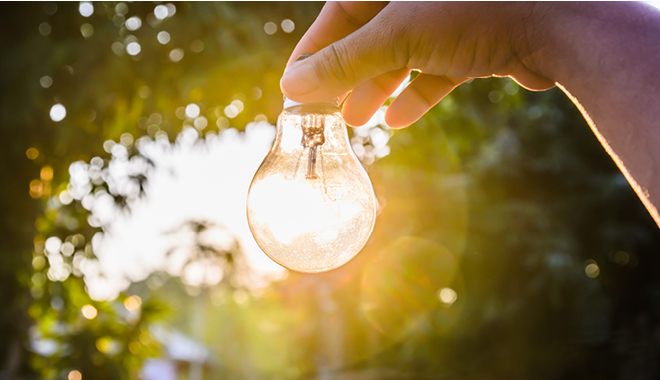Lighting The World

What do Thomas Edison, Nikola Tesla, Alfredo Moser and Illac Diaz have in common? They’re all inventors with a dream of lighting the world. There are now small grassroots organizations that are spreading affordable, sustainable lighting to people with limited or no access to electricity.
Alfredo Moser created the bottle light for his village in order to reduce the cost of electricity and minimize the dangers of candle or kerosene light. Moser was very successful at teaching others to make the bottle light, using a two-liter plastic bottle filled with water and two capfuls of bleach. The refracted light from the bottle, depending on the sun’s strength, gives off 40 to 60 watts. Philippine entrepreneur Illac Diaz took this idea and expanded on it and shared it with the world. Diaz helped Moser fill plastic bottles with dirt to build simple structured schools in small villages. Their next challenge was how to bring light into the schools where no electricity was available. His solution – adding bottles filled with water and placing them in the walls to generate an additional light source.
Diaz founded the non-profit organization called Liter of Light to teach volunteers to make a solar bottle light. So far, Liter of Light has installed more than 350,000 bottle lights in more than a 15 countries and taught green skills to empower all local entrepreneurs, with the support of the U.S. State Department and PepsiCo.

Liter of Light is a global organization that truly believes in the 3Rs – reuse, renew, recycle. Liter of Light was the winner of the 2014-2015 World Habitat Award and recipient of the 2015 Zayld Future Energy Prize. Their open source technology has been recognized by the United Nations (UN) and adopted for use in some UN refugee camps.
The first test for the organization came after Typhoon Haiyan hit the Philippines in 2013. Haiyan was reported as one of the strongest typhoons ever recorded in history that devastated many rural communities. Diaz offered solutions that were taught and maintained by the local communities he visited. Diaz installed solar bottle lights in communities devastated by the storm, training volunteers to assemble the lights themselves using as many found resources in the area.
Diaz sees self-sufficiency as the key to resilience. “The future of solar is… putting it in the hands of everyone, putting it in the hands of people who can solve their own problems,” said Diaz in his TEDx Talk. “The small things, multiplied by the millions, will be the greatest solar revolution of them all. Lighting up the world a liter at a time. ”
Get involved – make a bottle light, sponsor a village through Liter of Light, donate or volunteer!
To see the full presentation visit TEDx Talks – https://youtu.be/z02ngSto-sk
For more Liter of Light information visit – http://literoflight.org/




Kat Rigdon
This is pretty interesting. Another light that popped up on my facebook recently was the Gravity Light. It’s a really handy light that doesn’t require any electricity or fuel like Kerosene. This makes it FREE to run. It’s relatively cheap by US standards, however, $20 by African standards is still a lot of money to put towards a light, when there are other things like food to consider.
However, despite the cost, I think it’s a fantastic option for people living in poverty. It reduces the chance of shack fires, sickness or death due to Kerosene or Paraffin lamps etc, and it could also eliminate electricity theft, which in itself is a dangerous misadventure for those doing the actual thieving.
https://gravitylight.org